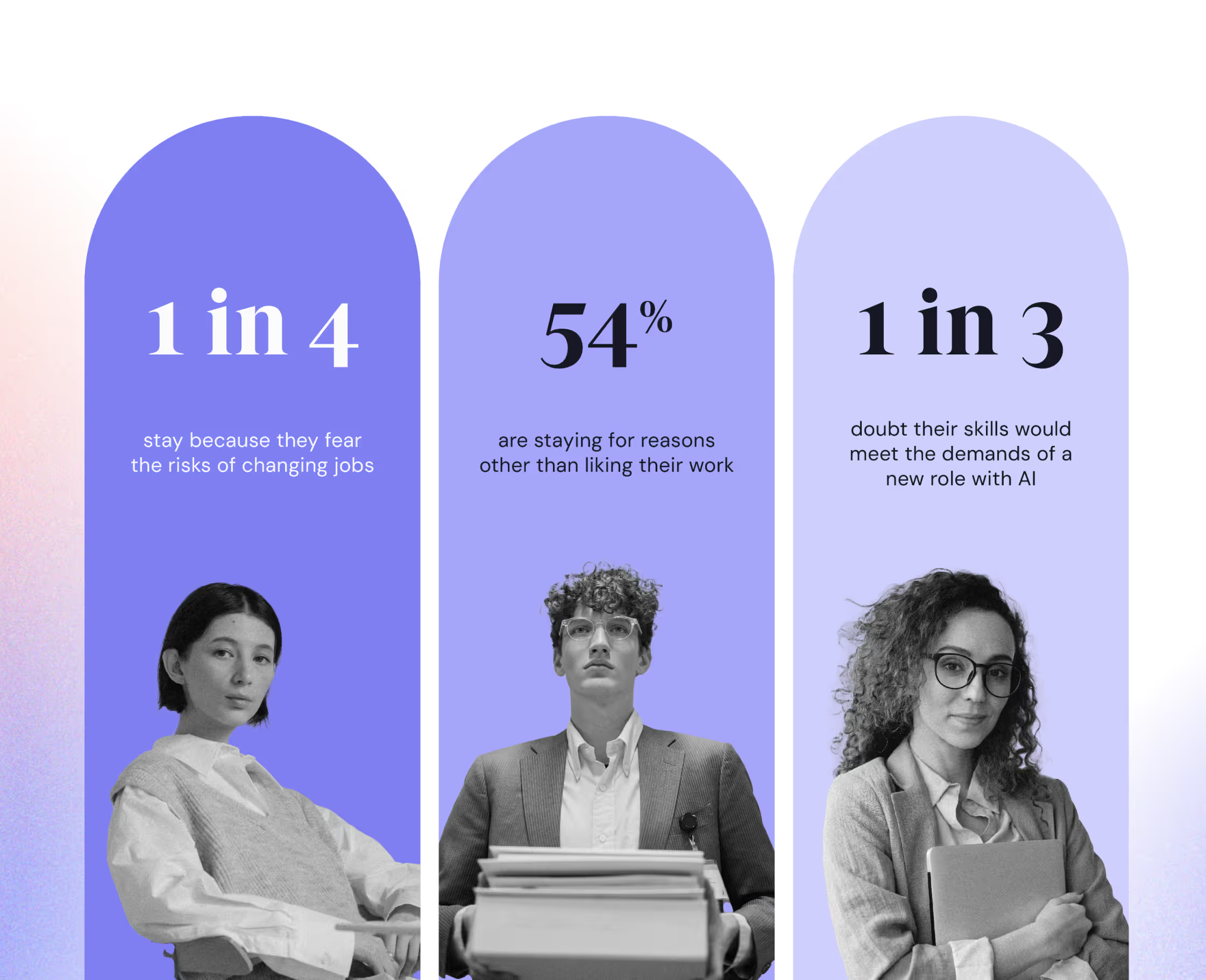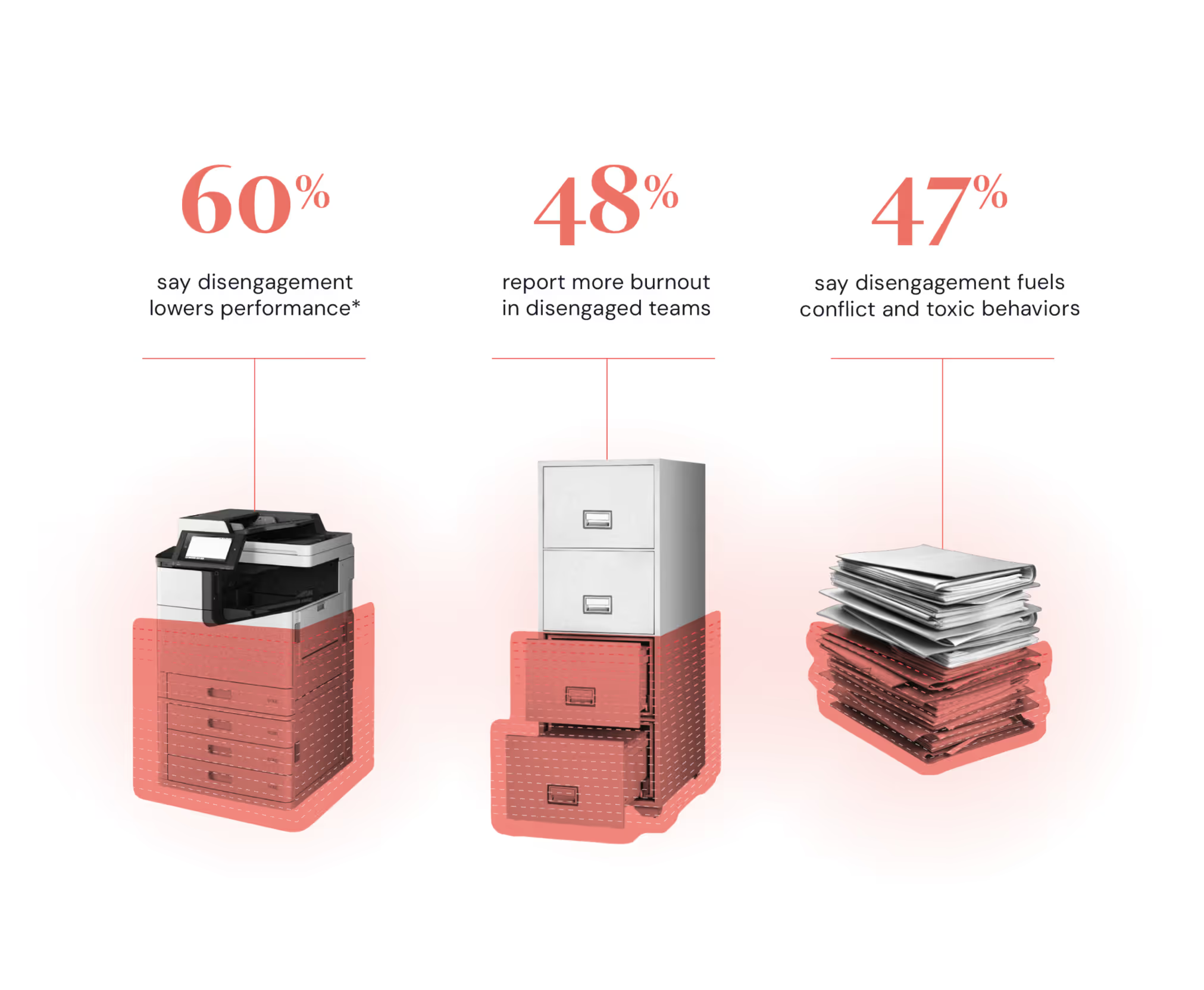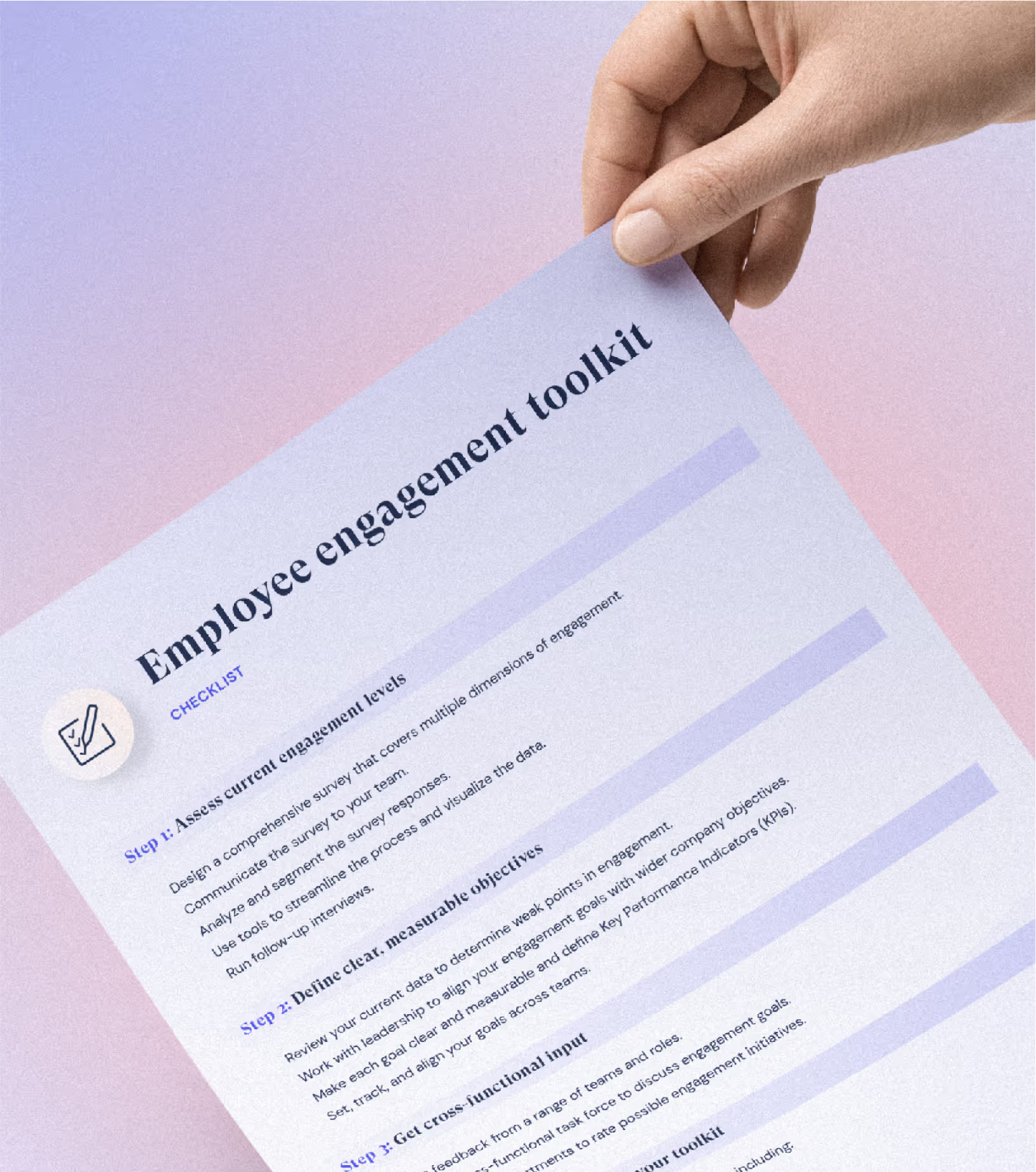Intro
2026WORKFORCE
TRENDS REPORT
People at the Center of Change




People want to grow.
Your company needs innovation.
HR can connect the two.
Today’s workforce is under pressure.
Global shifts in trade, policy, geopolitics, and technology are reshaping decisions inside and outside of work.
In our 2026 Workforce Trends Report, 2,400 employees and HR leaders share how they’re affected: the job market feels uncertain, and many people are holding onto jobs out of caution. Retention may look steady — but beneath the surface, motivation, trust, and performance are slipping.
AI is adding to the strain.
It’s entering workplaces much faster than the support available, raising expectations before employees have the time, skills, or clarity to adjust. Many are learning new tools while also covering work from colleagues whose roles weren’t replaced.
With hiring slowed, the pressure lands on leaner teams. But without structure, training, and clear ownership, promised AI gains don’t reach the people doing the work. This “crunch moment” slows innovation just when businesses rely on it for growth.





For HR leaders, this is a chance to turn pressure into progress.
People teams play a critical role in balancing employee needs with business demands, guiding AI into daily work with clear communication and guardrails, and rebuilding trust through transparency and follow‑through. When growth paths are visible and time to learn and experiment is protected, it’s much easier for people to keep pace and for innovation to move forward.
This report explores:
- Why steady headcount can mask a stagnant, disengaged workforce
- How AI is creating both new opportunities and concerns
- Where trust is breaking down and how to restore it
At Leapsome, we believe people are key for the future of work — and the foundation of business success. Done right, AI can support better work and help HR leaders build resilient organizations where people and business thrive.





Core trends defining the future of work & leadership

Employees are staying for security, not satisfaction
Many employees remain in roles for stability, even if they’re no longer the right fit.
Market signals and wider uncertainty play a part; the cost is disengagement, lower motivation, and slower progress.

AI ambition without readiness undermines productivity
Some companies have slowed junior hiring and backfilling, expecting AI to fill the gaps.
Without clear strategy, training, and strong change management, pressure mounts on remaining teams — and gains fall short.


Trend 1



Why “good’ retention can hide a disengaged workforce
At first glance, stable retention can look like a win. But many employees aren’t staying because they’re thriving — they’re staying because leaving feels risky. Job growth is slowing across major markets,* making roles harder to land and riskier to give up.
At the same time, AI is changing job requirements so quickly that 33% of employees doubt their skills would match what’s expected in a new role. Under that pressure, people are choosing safety over satisfaction.
*Source: OECD’s Employment Outlook 2025






Job changes feel risky — even for those ready to leave
30% want to leave their current workplace, but
The desire to move on is real, but so is the fear of what comes next. Short‑term contracts, fewer flexible options, and a tougher market make change feel unsafe. Add concerns about fast-changing AI skills, global instability, and shifting economies, and it’s clear why many would-be job movers hesitate.





The cost of fear-based retention
For ICs that stay out of fear, these are the top 3 negative effects experienced:
Lower emotional & mental well-being
Reduced motivation & engagement
Less feelings of belonging or connection
Fear‑driven choices drain energy, reduce motivation, and erode connection to culture — weakening the foundations of performance and innovation.
Productivity is the first thing to go when motivation fades
When morale drops, the effects show up fast. Six in ten HR leaders and managers say disengagement directly cuts performance — and the financial toll is staggering.
According to Gallup, global disengagement costs businesses around US$8.8 trillion annually, or 9% of global GDP.*
*Source: Gallup State of the Global Workplace, 2023






Why motivation slips
Individual contributors say disengagement comes down to the basics: too little growth, too much work, and unhealthy cultures.
For those staying out of fear, the trade-offs feel like stability — but they also cost performance.






Turn insights into action
To break fear-based retention, reset the conditions so people can contribute from day one and grow with confidence.
Create visible career paths
Make growth paths and expectations clear; connect growth to team purpose and mission, and recognize progress early.
Rebalance workloads
Align responsibilities to capacity; remove low‑value work to protect focus and well-being.
Restore trust & purpose
Explain decisions, act on feedback, and close the loop. Tie goals to customer and business impact so people see why their work matters.




Anchor your people
Engagement, as we’ve defined it for the past 20 years, is dead.
What people want has changed. They don’t need to be entertained — they want to contribute from the moment they join. Our job is to remove the hoops and hurdles and let them add value right away.
In a world of personalization, employees want to plug in, get instant feedback, and move with purpose. This is not tied to a generational argument. Today’s workforce doesn’t want to be engaged. It longs to be anchored.
Anchoring gives people a clear role, a sense of security, and visible connection. When employees feel anchored, they know they matter, they see their place in the company, and they can weather any storm. That stability fuels collaboration, diverse perspectives, and belonging.
Look around your organization. Where could you take steps to anchor your people? Take those steps, and you‘ll see what true engagement looks like!!





Employee engagement toolkit
Keeping employees connected and motivated doesn’t happen by chance — it takes the right tools and practices. That’s why Leapsome created this employee engagement toolkit: a practical guide for HR and managers to strengthen culture, boost retention, and drive performance.
What’s inside
- Step-by-step checklist to design your engagement strategy
- Templates for surveys, feedback, and recognition programs
- Ideas for learning & development and team-building activities
- Communication and wellness frameworks that support culture






Help employees see a future worth staying for
Leapsome makes career growth meaningful and fair by streamlining reviews, clarifying competencies, and turning feedback into development.





Trend 2:
AI ambition without readiness




-compressed.avif)

